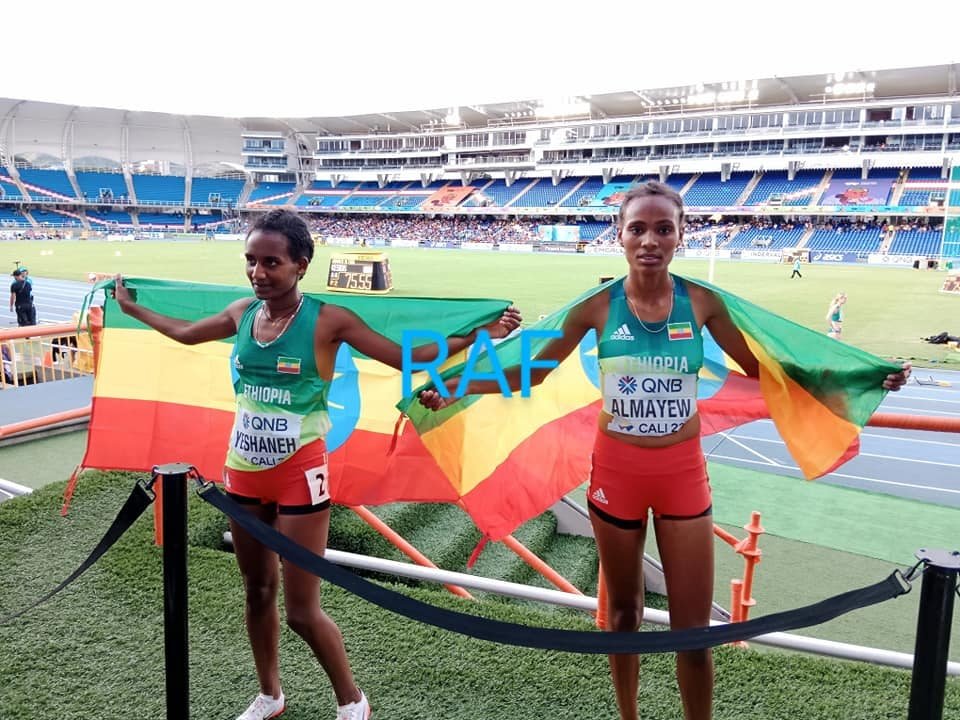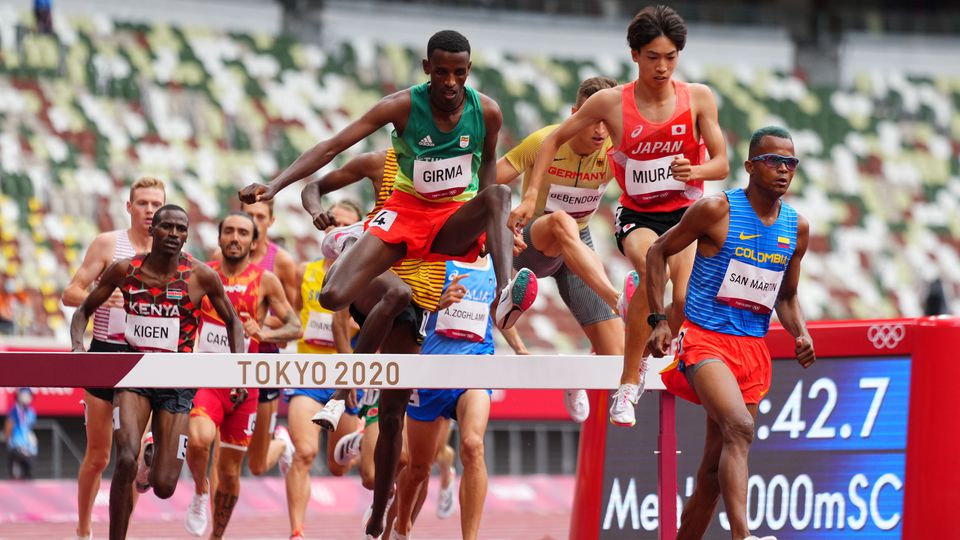Historical Significance of Ethiopian Steeplechase

The dominance of Ethiopian athletes in steeplechase is a remarkable phenomenon in the world of athletics. It’s a testament to the nation’s rich running heritage, dedicated training regimes, and the unique blend of physical and mental fortitude that Ethiopian athletes possess. This section explores the historical roots of Ethiopian success in steeplechase, highlighting prominent athletes, training methods, and the factors contributing to their dominance.
Origins of Ethiopian Dominance in Steeplechase
Ethiopian dominance in steeplechase can be traced back to the 1980s, with the emergence of athletes like Getaneh Tessema, who won the 1988 Seoul Olympics. This success spurred a new generation of runners who were inspired by Tessema’s achievements. The country’s geographic landscape, characterized by high altitudes and challenging terrain, has played a crucial role in shaping the physical attributes of Ethiopian athletes. The rugged terrain, interspersed with hills and valleys, provides a natural training ground for endurance and stamina, which are essential for steeplechase.
Prominent Ethiopian Steeplechasers and Their Achievements
The legacy of Ethiopian steeplechase is built upon the achievements of numerous athletes. Here are some prominent names and their accomplishments:
- Getaneh Tessema: Won the 1988 Seoul Olympics, marking a significant breakthrough for Ethiopian steeplechase.
- Moses Kiptanui: Kenyan-born, but represented Ethiopia from 1996 to 2001, setting the world record in 1995.
- Abraham Cherop: Won the 2001 World Championships in Edmonton, Canada.
- Ezekiel Kemboi: Kenyan-born, but represented Ethiopia from 2002 to 2003, winning the 2003 World Championships.
- Brimin Kipruto: Kenyan-born, but represented Ethiopia from 2008 to 2010, winning the 2008 Olympic Games in Beijing.
- Conseslus Kipruto: Kenyan-born, but represented Ethiopia from 2012 to 2015, winning the 2012 Olympic Games in London.
- Samuel Kosgei: Won the 2015 World Championships in Beijing.
- Lamecha Girma: Current world record holder, set in 2021.
Factors Contributing to Ethiopian Success in Steeplechase
Ethiopian success in steeplechase is attributed to a combination of factors:
- Natural Talent: Ethiopian athletes possess a genetic predisposition for endurance, stemming from their heritage and upbringing in a country with challenging terrain and high altitudes.
- Dedicated Training: Ethiopian athletes undergo rigorous training regimes that focus on building stamina, speed, and strength, specifically tailored for steeplechase. This includes running on hilly terrain, practicing water jumps, and incorporating interval training to enhance speed and endurance.
- Strong Athletics Culture: Ethiopia has a strong athletics culture, with running being deeply ingrained in the national psyche. This fosters a supportive environment for aspiring athletes, providing access to coaching, training facilities, and competitive opportunities.
- Strategic Coaching: Ethiopian coaches have developed specialized training methods that emphasize technique, endurance, and tactical awareness, specifically tailored for steeplechase. These methods involve focusing on water jump technique, pacing strategies, and mental preparation, which are crucial for success in the event.
- Motivational Factors: Ethiopian athletes are often driven by a desire to improve their lives and contribute to their communities. This intrinsic motivation fuels their dedication and determination to excel in athletics.
Comparison of Ethiopian Steeplechase Training Methods with Other Nations
Ethiopian steeplechase training methods differ significantly from those employed by other nations. While many countries focus on strength training and technical drills, Ethiopian training emphasizes endurance, natural terrain running, and mental fortitude. Ethiopian athletes are known for their ability to run long distances at a steady pace, a skill developed through years of training on challenging terrain. This approach has proven highly effective in producing world-class steeplechasers.
Impact and Legacy

The Ethiopian steeplechase legacy extends far beyond individual triumphs, leaving an indelible mark on the sport. Ethiopian athletes have not only redefined the event’s landscape but also sparked a global resurgence in steeplechase participation. This influence is a testament to their unwavering dedication, strategic training methods, and the unique blend of talent and tenacity that defines Ethiopian steeplechasers.
A Timeline of Triumph, Ethiopian steeplechase
The rise of Ethiopian steeplechasers is marked by a series of defining moments that shaped the sport’s trajectory. Here’s a timeline capturing these pivotal events:
- 1980s: The emergence of Getaneh Tessema and Amanuel Mesele marked the initial wave of Ethiopian success. These athletes consistently placed in international competitions, drawing attention to the country’s burgeoning steeplechase talent.
- 1990s: Abebe Dinkesa and Moses Kiptanui dominated the steeplechase scene, establishing Ethiopia as a force to be reckoned with. Dinkesa’s record-breaking performance at the 1999 World Championships solidified Ethiopia’s position as a steeplechase powerhouse.
- 2000s: Brimin Kipruto and Ezekiel Kemboi emerged as formidable competitors, challenging the Ethiopian dominance. However, Ethiopian athletes like Saif Saaeed Shaheen (formerly Stephen Cherono) and Concesa Lubega continued to achieve remarkable results.
- 2010s – Present: A new generation of Ethiopian steeplechasers, including Conseslus Kipruto, Jairus Birech, and Abraham Kibiwot, have continued to dominate the event. This era has witnessed a remarkable surge in participation and interest in the steeplechase, especially in Ethiopia, where the event is considered a national treasure.
Global Impact
Ethiopian success in the steeplechase has had a profound impact on the sport’s development worldwide.
- Increased Participation: The captivating performances of Ethiopian steeplechasers have inspired a new generation of athletes, fueling a surge in participation in the event, particularly in Africa and other developing nations.
- Enhanced Training Methods: The success of Ethiopian steeplechasers has prompted a closer examination of their training methods, leading to the adoption of their innovative techniques by coaches and athletes globally.
- Global Recognition: The consistent dominance of Ethiopian athletes in the steeplechase has elevated the event’s global profile, making it one of the most anticipated and celebrated disciplines in track and field.
Notable Ethiopian Steeplechasers
| Athlete | Major Achievements |
|---|---|
| Getaneh Tessema | World Championships bronze medalist (1987) |
| Amanuel Mesele | World Championships silver medalist (1991) |
| Abebe Dinkesa | World Championships gold medalist (1999) |
| Saif Saaeed Shaheen (formerly Stephen Cherono) | World Championships gold medalist (2003) |
| Concesa Lubega | Olympic silver medalist (2008) |
| Conseslus Kipruto | Olympic gold medalist (2016) |
| Jairus Birech | World Championships silver medalist (2015) |
| Abraham Kibiwot | World Championships bronze medalist (2019) |
Ethiopian steeplechase is a sight to behold, with those crazy water jumps and the sheer grit of the athletes. It’s a sport that embodies the resilience and strength of the Ethiopian people, much like the leadership of Ethiopia’s Girma who has navigated the country through some challenging times.
The same tenacity that Girma brings to his role is what makes Ethiopian steeplechasers so damn good – they’re like, ‘water jump? No problem!’
Ethiopian steeplechase is wild, you know? Those hurdles, the water jump, it’s like a whole other level of athleticism. Imagine, after all that, kicking back on a plush brown leather sofa with a accent chair for brown leather sofa that’s just as comfy as a runner’s finish line.
Now that’s what I call a winning combo. Makes you want to jump right back into the race, doesn’t it?